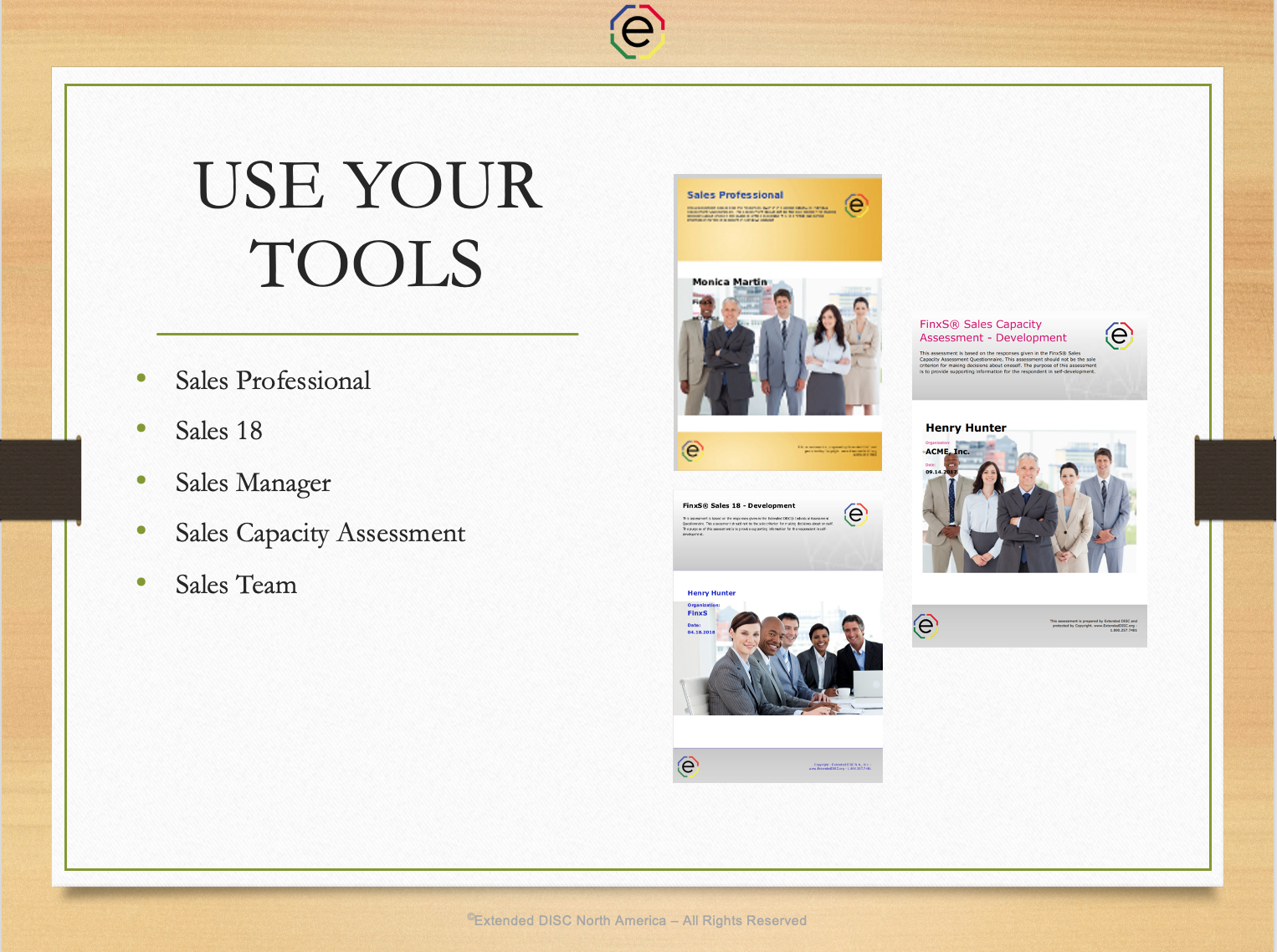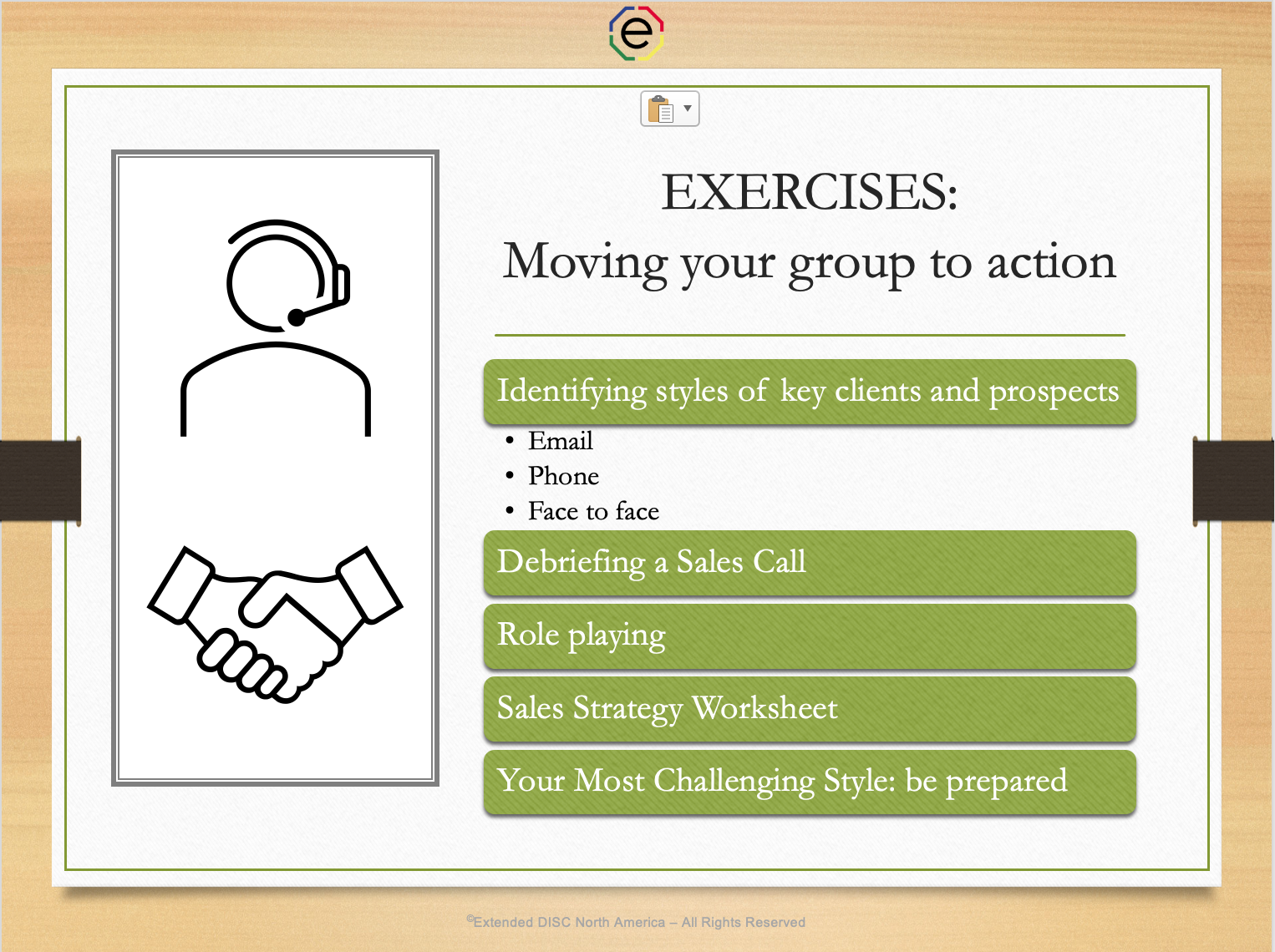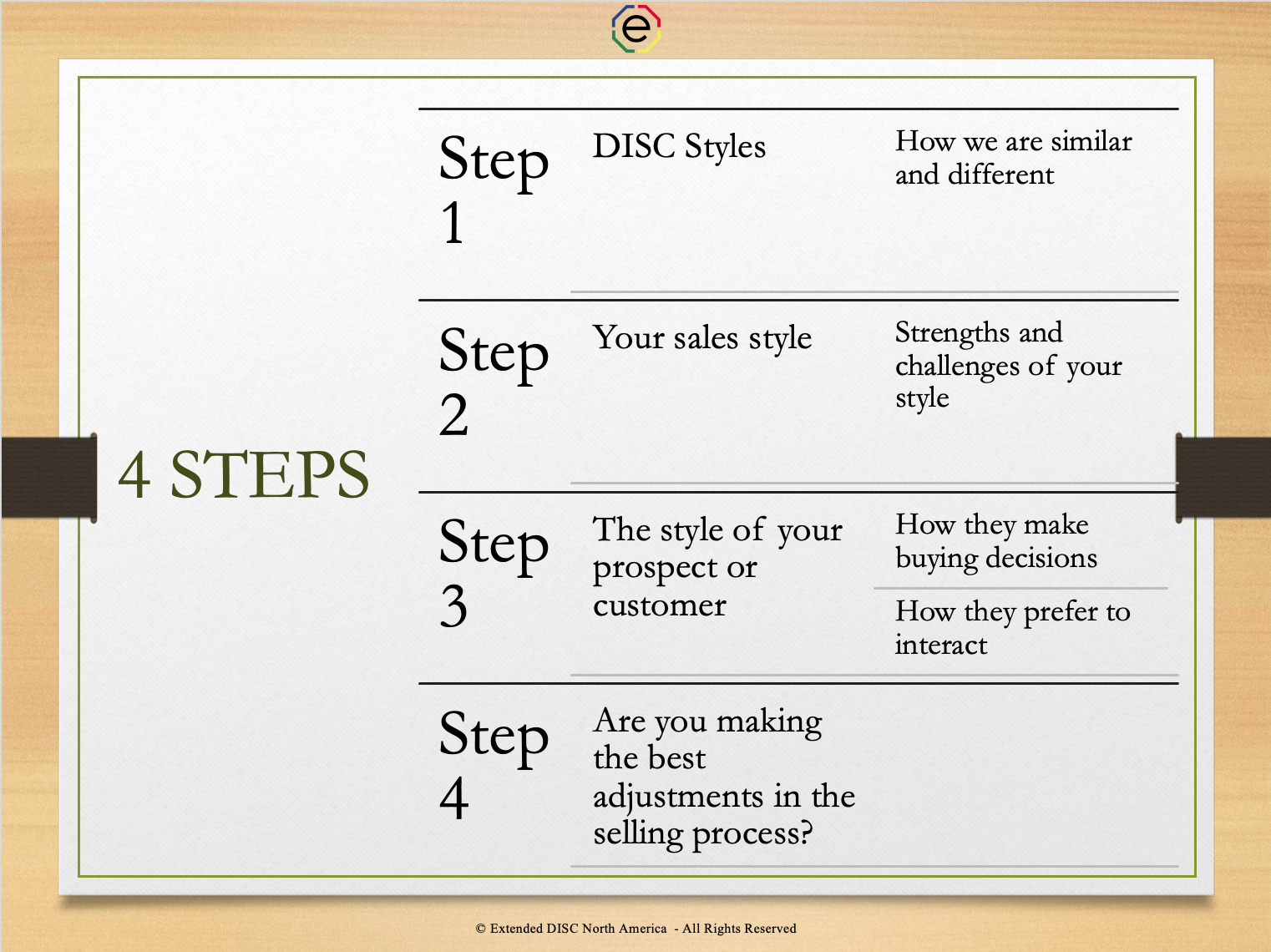Is it time to add extra energy and learning experiences to your DISC sales sessions?
DISC sales sessions help your salespeople be more productive and sell more successfully. The key is finding the balance between learning, practice, and application. Here are a few tips, activities, and resources to deliver your best sessions yet.
Energize expectations and learners from the start

Involve people and turn on the energy level early on. How? Start with a warm up activity! Try asking a simple set of questions that connect them to their DISC results. For example:
- What two words would you use to describe your sales style?
- What two words do you think your clients would use to describe your sales style?
Or, ask your salespeople to select a quote they connect to. Use quotes that work for your group. What would you choose from the following?
– Confucius, Chinese Philosopher
Buyers don’t believe anything you have to say to them about your product or service until they first believe in you.
– Deb Calvert, The Sales Experts Channel founder
A straightforward way to show buyers that you genuinely like them is to identify something about them that you sincerely appreciate.
– David Hoffeld, Scientific Sales Trainer
If you really look closely, most overnight successes took a long time.
– Steve Jobs, founder of Apple
If you want to succeed you should strike out on new paths, rather than travel the worn paths of accepted success.
– John D Rockefeller, American business magnate
There are no right or wrong or better or worse answers. What’s important is it’s a start to building self-awareness of one’s selling style and relating their choices to DISC style. Tie in the warm-up activity to the session by revisiting their answers in different parts of the workshop.
Make the most of your session by being prepared, selecting activities to support your training goals, and preparing your learners. What other aspects should you consider to maximize your session? For today, let’s focus on assessment tools and activity examples.
Building assessment tools into learning and application

Don’t reinvent the wheel. Your job is challenging enough. Instead, build simple and applicable training using the resources provided at Extended DISC and customize them to fit your training goals. DISC is usually one of many tools in your tool box.
Extended DISC® suite of sales assessments help you build your training. The reports are not just delivering valuable data, but also creating opportunities to evaluate your behavioral sales style and your sales process capacity.
The Sale Professional Assessment builds confident self-awareness. In addition, it helps create your unique ways of adjusting your style for increased sales success. It can be specific for your sales managers and your sales teams.
Sales 18 identifies your natural comfort levels in 18 critical sales competences. These same 18 competences in the Sales Capacity Assessment are used to identify your current sales strengths and development areas.
The report has key questions and activities to help people understand their results, build self-awareness, and apply their learning.
A simple report exercise is to revisit the describing yourself and how your sales styles might be described by your prospects activity and compare it to the ‘at a glance’ section. The ‘at a glance’ section in the Sales Professional report describes how your sales style is typically seen by others. Your blind spots, the gap between how you see your style versus how others see your style, is often the greatest opportunity for development.
Review the reports from a trainer perspective. How can you use the reports to support your salespeople?
Exercises: moving your group to action

Moving your group to action is an effective way to transfer learning into real world situations.
Don’t forget to practice identifying the DISC styles. Try pairing people off or have them work in small groups. Next, have them choose a client or prospect to identify their DISC styles based on observed patterns of behaviors. It not only helps get a clearer view of styles, but also provides more insight about key people.
Role playing is not new in training. It can be energizing for some and less comfortable for others. However, it’s an opportunity to practice difficult and less natural situations. As a trainer, take some time to learn about your salespeople’s common sales situations or don’t hesitate to ask them to volunteer common situations that tend to challenge them. Next, ask them to role play these situations in a learning setting. Debrief the situation and remind them debriefing real sales interactions is an opportunity to learn and develop.
Don’t forget to address the increasing virtual sales setting. Create role playing about sales and virtual calls, and emails. Can you identify styles in emails and phone calls? Which styles prefer emails over calls and vice versa?
Try trivia apps such as Kahoot® or Quizizz® (not endorsing – just a couple examples). You can create fun quizzes and have people compete for bragging rights. They can be great energizers and usable in remote or in person settings! You can have a few quizzes ready to insert an energy boost whenever you need one.
Activity sections are where the learning comes to life so make them plentiful.
Don’t forget the 4 steps to successful interactions!

The 4 Steps to Effective Interactions template includes the basic and key learning points. It helps you reach your training goals. Step 4 puts the first 3 Steps into practice by creating a behavioral action plan.
Give your salespeople the gift of DISC. Are you ready?
